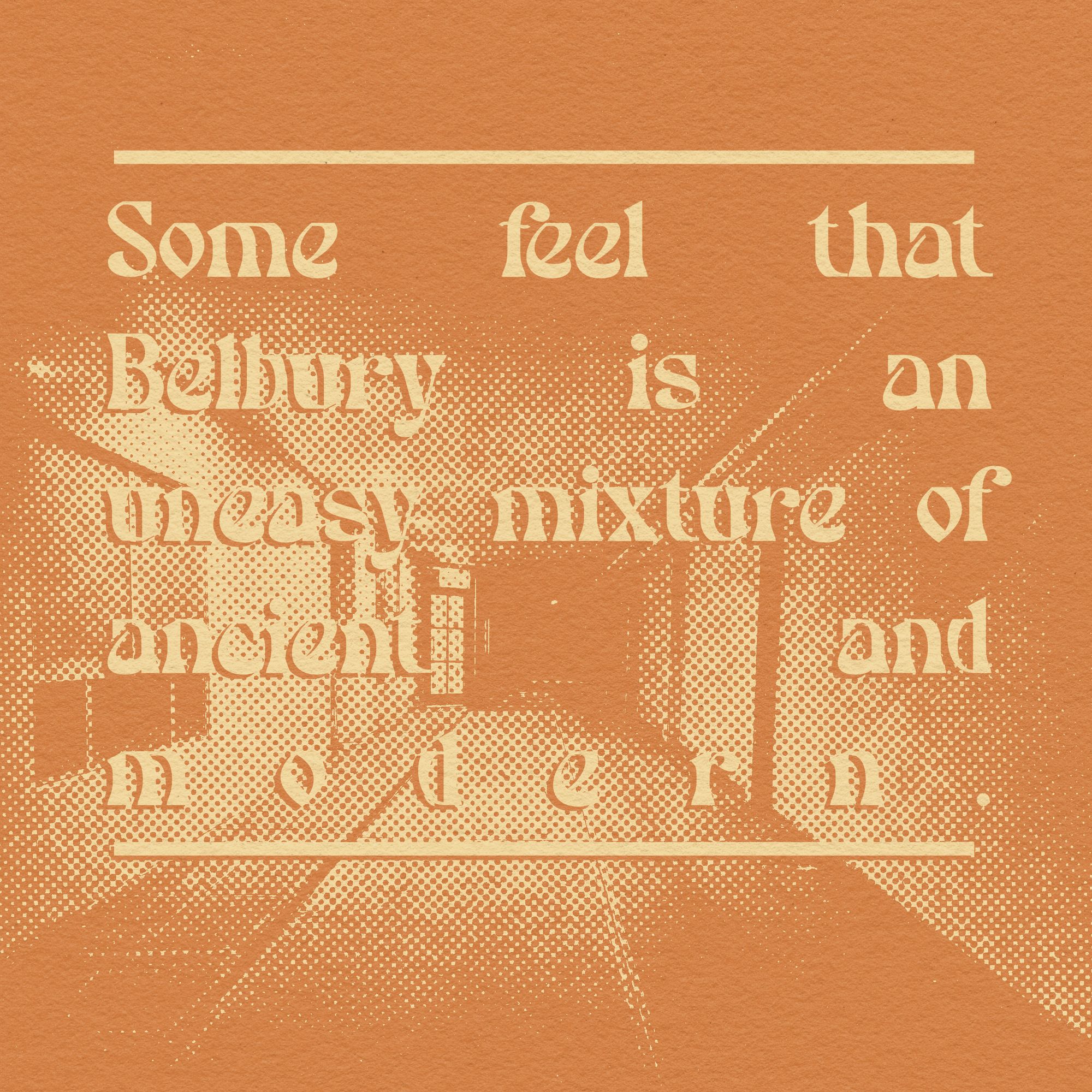A fictional town evoked by music: Belbury and Ghost Box records

This weekend, I took a bit of time to listen to some albums put out by the hauntology-heavy Ghost Box record label. I especially enjoyed The Owl's Map and The Belbury Tales by Belbury Poly. The latter is a sort of . . . nostalgic, prog rock-y supernatural concept album that feels equal parts folk and electronic? I dunno, I'm terrible at describing music, but you should give it a listen.
I—of course—learned about the albums from a chapter in a book called The Oxford Handbook of Music and Virtuality (2016).[^1] You get your music recommendations from academic texts, too, right?
This brings us back around the the British folk horror vibes I talked about in a different blog post this week. In the book chapter, "Stone Tapes: Ghost Box, Nostalgia, and Postwar Britain" by David Pattie, the author talks about using a sort of radical nostalgia to critique the past, and how disorienting that feeling can be. (That chapter is the main source for this post, by the way.)
Ghost Box has a real nostalgic vibe, with aesthetics that include halftone-filled album covers with 70s typefaces and samples from 70s PSAs.
But just as it plays with nostalgic images that folks of a particular age might remember from their childhood, Pattie describes how the label "creates a virtual version of a past Britain, which manages to escape the lure of the simply nostalgic because its nostalgia isn’t for a lost country, but for a country that was never quite there."
In label, in particular the band Belbury Poly, appears to be centered around the setting of Belbury, a fictional English town that originated in the C.S. Lewis book That Hideous Strength.
The CD booklet of The Owl's Map by Belbury Poly, their second album, contains a Field Guide to British Towns and Villages. It depicts Belbury as a border town (very liminal). The town is described as consisting of landmarks like:
- a medieval town center (mostly ruined by a 1940 air raid)
- the “quaint Manor Hall”
- the “reputedly haunted Baroque Folly”
- “some notable modernist architecture including the Polytechnic College, Public Library and the striking Community Fellowship Church.”
- an Iron Age for on Belbury Hill
- Neolithic stone circle at Thornwood Ring
The liner notes say "some feel that Belbury is an uneasy mixture of ancient and modern," which seems to read like a thesis statement for Belbury Poly's music, and the hauntology genre as a whole.
Pattie describes Belbury as a palimpsest (manuscript pages that have been reused by a later writer), a combo of things from different eras. He said that's similar-ish to C.S. Lewis' version. Only in That Hideous Strength by C.S. Lewis, modernity is encroaching on old, conservative England, whereas in Belbury Poly's version, the present slips into the past and "the past infects the present."
Of course, Stone Tape Theory makes an appearance here, as well. The paranormal theory itself was popularized by a 1972 British TV movie called The Stone Tape, which another Ghost Box band weaves into the lore of Belbury: "According to a scientific report helpfully included in Pye Corner Audio’s Sleep Games, Kneale’s The Stone Tape (which follows the attempts of a group of scientists to study and exploit the echoes of past violence, trapped in the walls of the old mansion that they occupy) is being replayed in Belbury—but this time it is in the town’s discos, and the traumatic echoes of the past are caught in concrete."
Pattie's chapter features a handful of great quotes, but my favorite one was from the late Trish Keenan (of the band Broadcast); this quote from her appeared in The Belbury Tales album and sums everything up nicely: "It seems to me that the past is always happening now. In the present we are always memory."
About the art in this post: I took this photo in Queens, NY; it's a driveway leading to an apartment building parking garage.
[^1] Depending on what local library you belong to, you might be able to access the whole book online. I tried to log in here to read the full text, but I got an error with my New York Public Library number, even though I know it works. If you're a fellow NYPL cardholder, you gotta access it through the database section of the NYPL website; just search for Oxford University Press's portal and it'll let you in. If not, I'd suggest that you try to get it through your own library and/or local university's website. (Not sure how widespread subscriptions are to OUP's portal, since the NYPL had one but the Queens Public Library didn't, but it's worth a try.)

